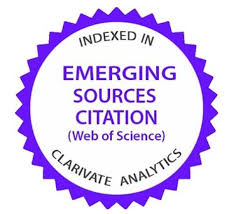Sponsorship: a form of prostitution or a form of traditional gender relations?
DOI:
https://doi.org/10.35295/osls.iisl/0000-0000-0000-0986Palabras clave:
patrocinio, matrimonio, géneroResumen
Este artículo revisa datos de investigaciones empíricas anteriores para reflexionar sobre los límites de la posición social de las mujeres según sus relaciones personales, familiares y sexuales. Siempre se ha diferenciado a la mujer monógama o “buena” de las mujeres que obtienen beneficio de sus relaciones sexuales y que han sido etiquetadas como “prostitutas”. Pero hay nuevos grupos que están emergiendo en las líneas fronterizas del trabajo sexual; en particular, el "patrocinio", mediante el cual un hombre proporciona una seguridad financiera a una mujer a cambio no sólo de sexo, sino también de compañía en actividades varias relacionadas con negocios o placer. Este artículo se pregunta cómo se percibe este rol, ya que incluye elementos del matrimonio tradicional y del trabajo sexual tradicional.
Descargas
Metrics
Estadísticas globales ℹ️
|
469
Visualizaciones
|
794
Descargas
|
|
1263
Total
|
|
Citas
BBC News, 2017. Landlord adverts posted online “target young for sex”. BBC News [online], 13 April. Available from: http://www.bbc.com/news/uk-england-39568458 [Accessed 31 October 2018].
Caslin, S., 2010. Flappers, Amateurs and Professionals: The Spectrum of Promiscuity in 1920s Britain. In: K. Hardy, S. Kingston and T. Sanders, eds., New Sociologies of Sex Work. Farnham: Ashgate.
Chapkis, W., 1997. Live Sex Acts: Women Performing Erotic Labour. London: Cassell.
Charkowska, K., 2012. Zjawisko prostytucji w doświadczeniach prostytuujących się kobiet. Krakow: Impuls.
Connell, R.W, 2005. Masculinities. 2nd ed. Oakland: University of California Press.
Duch-Krzystoszek, D. 2007. Kto rządzi w rodzinie. Warszawa: IFiS PAN.
Engels, F., 2004. The Origin of the Family, Private Property and State. Chippendale, NSW: Resistance Books.
Fineman, M., 1995. The Neutered Mother, the Sexual Family, and Other Twentieth Century Tragedies. New York: Routledge.
Gardian, R., 2007. Zjawisko sponsoringu jako forma prostytucji kobiecej. Krakow: Impuls.
Haywood, C., and Mac an Ghaill, M., 2003. Men and Masculinities. Theory, research and social practice. Buckingham, PA: Open University Press.
Hochschild, A.R., 2003. The Managed Heart. Commercialization of Human Feeling. 2nd ed. Oakland / Los Angeles: University of California Press. DOI: https://doi.org/10.1525/9780520930414
Hochschild, A.R., 2013. The Outsourced Self. Intimate Life in Market Times. New York: Metropolitan Books.
Lombroso, C., and Ferrero, G., 2004. Criminal Woman, the Prostitute and the Normal Woman. Trans.: M. Gibson and N.H. Rafter. Durham, NC: Duke University Press. (Originally published in Italian in 1893). DOI: https://doi.org/10.1515/9780822385592
Mead, M., 1966. Marriage in Two Steps. Redbook, nº 7, pp. 47–49, 84, 86.
Minow, M., 1990. Making All the Difference. Inclusion, Exclusion and American Law. Ithaca, NY / London: Cornell University Press.
Radakovich, A., 2012. The real-life girlfriend experience. GQ [online], 29 march. Available from: https://www.gq-magazine.co.uk/article/gq-girls-anka-radakovich-on-the-girlfriend-escort-experience [Accessed 31 October 2018].
Russell, B., 1976. Marriage and Morals. London: Allen and Unwin. (Originally published in 1928).
Descargas
Publicado
Cómo citar
Número
Sección
Licencia
Derechos de autor 2018 Malgorzata Fuszara

Esta obra está bajo una licencia internacional Creative Commons Atribución-NoComercial-SinDerivadas 4.0.
Los autores conservan el copyright de sus trabajos, que se publicarán en OSLS bajo una licencia Creative Commons Reconocimiento NoComercial SinObraDerivada. Puede consultar más detalles en: http://es.creativecommons.org/licencia/. Si no está de acuerdo con esta licencia, por favor, póngase en contacto con nosotros.
El autor concede los permisos necesarios para difundir la información bibliográfica del artículo, incluyendo el resumen, y autorizar a otros, incluyendo las bases de datos bibliográficas, de índices y servicios de alerta de contenidos, a copiar y comunicar esta información.
Para más información sobre los permisos para distribuir su artículo en cada fase de la producción, por favor, lea nuestra Política de Autoarchivo y Divulgación (en inglés).
Las condiciones de copyright con el nombre de autores y co-autores, y la licencia Creative Commons se mostrarán en el artículo. Estas condiciones se deben aceptar como parte del proceso de envío de un artículo a la revista. Por favor, asegúrese de que todos los co-autores se mencionan correctamente, y que entienden y aceptan estos términos.






















